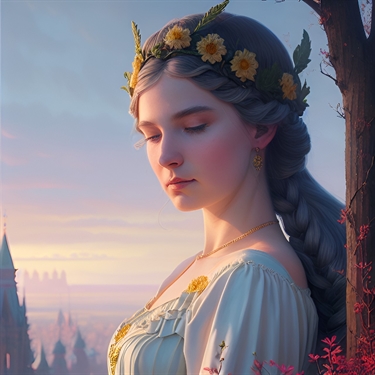| Ēostre |

Ēostre
Ēostregoddess of spring Ēostre (also known as Ostara) is a goddess from Germanic paganism, and her name is the basis for the modern-day holiday of Easter. While Ēostre is not specifically from Norse mythology, she is associated with the Germanic peoples who lived in Scandinavia and other regions during the Viking Age, and her worship may have influenced the beliefs and practices of the Norse. In pagan mythology, Ēostre was associated with spring and the renewal of life. She was often depicted as a fertility goddess, with symbols such as eggs and rabbits representing new life and growth. The holiday of Easter, which is celebrated by many Christians today, is believed to have originated from pagan celebrations of Ēostre. The timing of the holiday, which falls on the first Sunday after the first full moon following the vernal equinox, is closely tied to the pagan celebration of spring and the renewal of life. While the details of Ēostre's mythology are not well-documented, her legacy can be seen in the cultural traditions and celebrations that have arisen in her name over the centuries. |